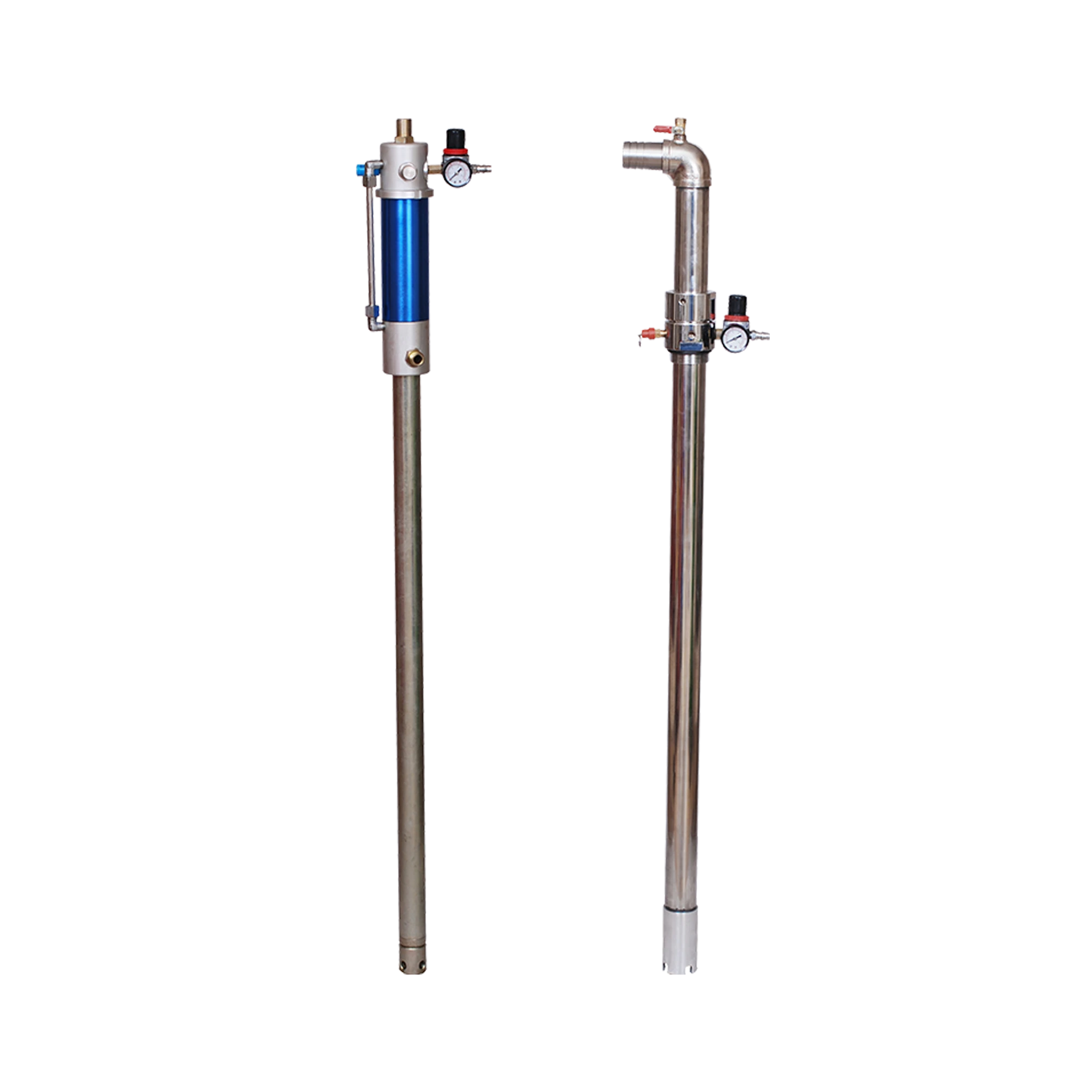Drum & Container Pump
The best tool to empty or transfer the liquid contents of any container
Drum pumps are used for the purpose of emptying the containers such as drums and tanks of liquid. It is suitable for a wide variety of both industrial and commercial applications. Adaptable and versatile, drum pumps are used in cleaning, food processing, automotive projects, chemical industry, and manufacturing warehouses.
How it works
A drum pump usually consists of a long immersion tube with a motor on one end and a pump on the other. The side of the tube with the pump gets lowered into the barrel, leaving the side with the motor sitting on top of the container. When the motor is activated, it powers the pump on the other end of the shaft, causing the liquid to move upwards. Sometimes, a hand crank is used to operate the drum pump instead.
Aside from removing unwanted liquids, drum pumps can also be used to transfer liquid between containers without the need to pivot or tip it over to remove their contents.
A useful tool for safer liquid removal from any container
The best argument for using a drum pump is that it helps prevent the risks associated with manually handling containers. There is a greatly reduced likelihood of injury, chemical spills, and exposure to toxic fumes due to not having to move the container physically. In addition, they are portable and lightweight.
Quality Drum/Barrel Pumps Supplied In Singapore
Winston Engineering proudly offers a broad range of drum pumps specifically designed for transferring liquids and emptying containers in a safe and cost-efficient manner. Our catalogue includes drum pumps from a variety of suppliers, lengths, and operating mechanisms, ensuring that we can meet a wide variety of container-pumping needs and requirements.
Contact us for more information.
FAQ
Why is material selection (chemical compatibility) the most critical factor when choosing a drum pump?
Material incompatibility is the number one cause of sudden pump failure, which leads directly to costly spills, regulatory fines, and safety hazards in Singaporean facilities.
- Chemical Compatibility Charts: It is essential to check the fluid's Safety Data Sheet (SDS) against a comprehensive chemical compatibility chart provided by the supplier.
- The Risk of Failure: If the wetted materials (Tube, Shaft, Impeller, and Seals) are not chemically resistant to the liquid, they will soften, swell, or corrode. This leads to immediate failure, potentially releasing corrosive, toxic, or flammable media.
- Common Materials & Applications:
- Polypropylene (PP): Best for water-based media, detergents, and dilute acids/alkalis.
- PVDF: Preferred for highly aggressive concentrated acids (e.g., Hydrochloric Acid, Sodium Hypochlorite).
- Stainless Steel (SS 316): Used for mineral oils, solvents, fuels, and food-grade applications.
How can a business ensure safe operation and prevent static discharge when pumping flammable liquids?
When transferring flammable liquids like solvents or fuels, an electrostatic charge can build up, creating a significant explosion-proof hazard. Safety requires specific equipment and procedures:
- Use an Explosion-Proof System: The pump must use either an Air Motor (inherently safe) or an ATEX/IECEx certified explosion-proof electric motor.
- Specify Stainless Steel: The pump tube and shaft must be constructed from a conductive material, typically Stainless Steel (316), not plastic.
- Implement Static Protection: A Static Protection Kit (bonding and grounding wires) is mandatory. This kit connects the drum pump, the source drum, and the receiving container to a common ground to safely dissipate any electrical charge during transfer.
When should a business invest in a high-viscosity drum pump instead of a standard model?
Standard drum pump models typically use an impeller to generate flow and are limited to low-viscosity liquids (up to approximately 1,000 mPas, like light oil or water).
You must switch to a specialised High Viscosity Drum Pump when transferring fluids like:
- Heavy Oils, Adhesives, Resins
- Molasses, Glycerine
- Thick Detergents or Wax Emulsions
These specialised pumps typically use a different operating principle, such as a Progressive Cavity (PC) design or a piston mechanism, which can handle viscosities up to 100,000 mPas. They operate at much slower speeds but deliver consistent, smooth flow for challenging media.
How does locally sourced support for a drum pump in Singapore minimise operational costs (TCO)?
Choosing a supplier for a drum pump in Singapore that provides expert local support, such as Winston Engineering, dramatically lowers the Total Cost of Ownership (TCO) by minimising downtime, which is the largest indirect cost in fluid handling.
- Certified Commissioning: A local supplier ensures the pump is installed with the correct motor, tube, hose, and static protection for the specific chemical. This eliminates early failures due to misapplication.
- Reduced Downtime: Drum pumps often run in critical production lines. If a seal fails or a shaft breaks, a local distributor provides immediate access to genuine spare parts, reducing the typical repair lead time from weeks (for overseas shipment) to under 24 hours.
- Training & Ergonomics: A local expert provides on-site user training on safe and ergonomic handling, ensuring the portable equipment lasts longer and reduces the risk of operator injury.
Who benefits most from using an industrial drum pump, and where are these pumps deployed?
The primary beneficiaries are personnel involved in the transfer of industrial chemicals, ingredients, and waste.
- Who: Production operators, maintenance technicians, chemical handlers, and quality control staff.
- Where: Drum pumps are essential for:
- Chemical Manufacturing: Dosing small volumes of reagents from drums into reactor vessels.
- Surface Finishing/Plating: Adding concentrates or neutralising agents from small containers into treatment baths.
- Water Treatment: Transferring coagulants, flocculants, or pH buffers from drums into process tanks.
- Oil & Gas/MRO: Dispensing lubricants, hydraulic oil, and coolants in maintenance workshops.






